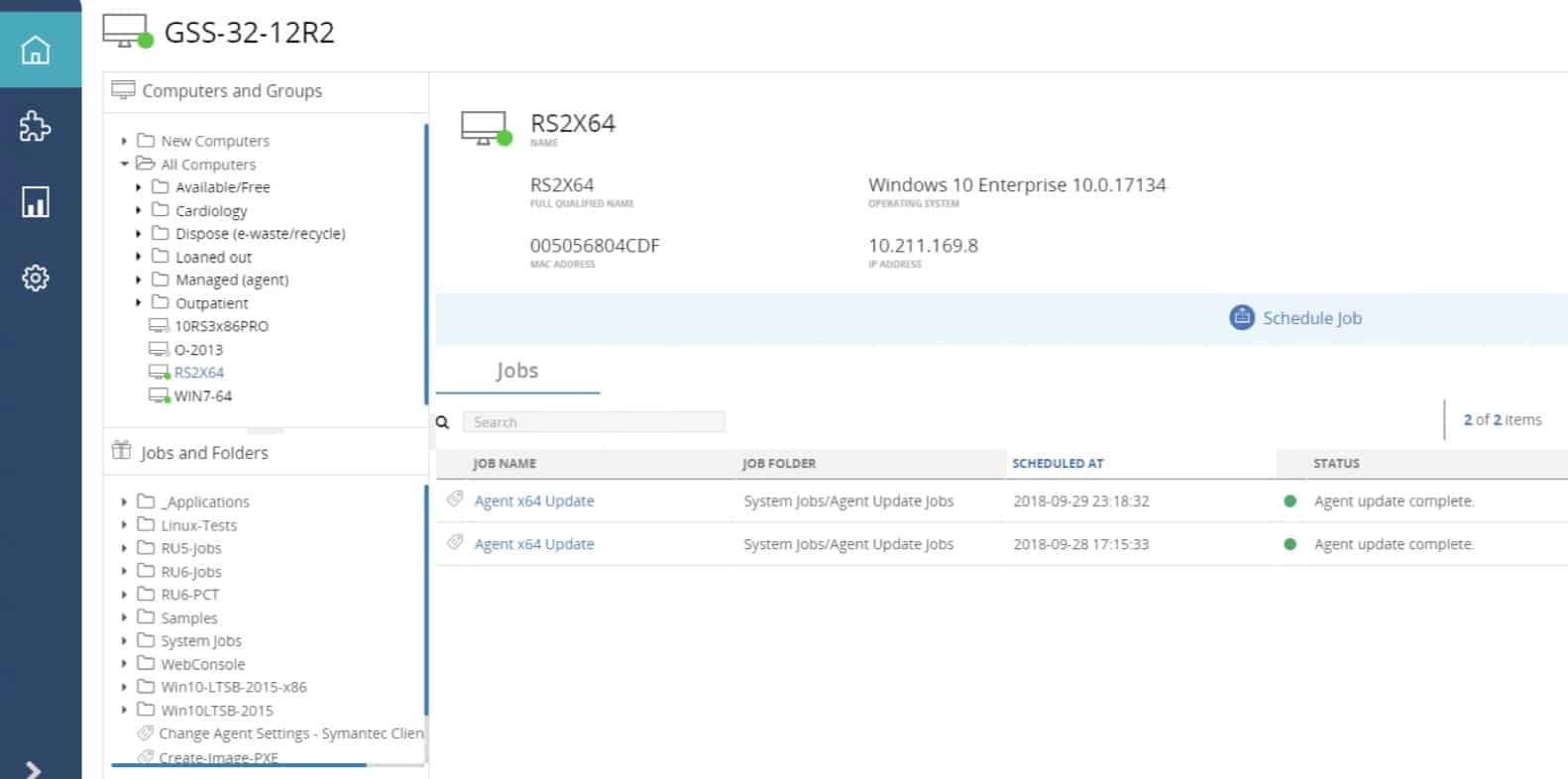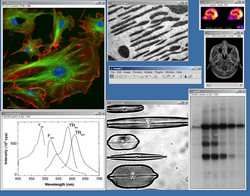- Hard Drive Cloning Software Mac
- Astro Imaging Software For Mac
- Free Imaging Software For Mac
- Disk Imaging Software Mac
- 3d Imaging Software For Mac
- Imaging Software For Mac
Summary: In this blog, we will share two methods to create a disk image-the first one using macOS Catalina’s Disk Utility and the second using a Mac data recovery application.
Read on to know the steps and benefits of these methods. Also, make sure you avail the free trial version of Stellar Data Recovery application.
- Most of these apps and processes do an entirely respectable job, but two cloning utilities—Shirt Pocket’s $28 SuperDuper and Bombich Software’s $40 Carbon Copy Cloner—stand above the rest.
- Clonezilla is a free and open-source disk imaging software that comes in three versions.
- Clonezilla – One Partition and disk cloning program to rule them all. Clonezilla is a partition and disk.
The result of shooting image can be quickly displayed by working together with 'Remote'. It also enables you to check the shooting image by using grid and guides. A list of image data such as RAW and JPEG is displayed. Using 'Viewer', you can select images to.
Disk image of an external or an inbuilt Mac storage drive is immensely helpful in recovering files in case the source drive fails or dies. You can create a disk image of your APFS or HFS drive on a larger storage medium and access it at a later point of time.
Create a Disk Image Using Disk Utility on macOS Catalina
macOS Catalina’s inbuilt Disk Utility provides an option to select a mounted storage drive be it internal or external SSD/HDD and create a disk image (.DMG) file to a location other than the source disk. The systematic steps to create a disk image of a drive using Disk Utility are as follows:
- Open DiskUtility and select the storage drive from the sidebar
- Go to File > New Image > Image from “DriveName”
- Give a name to your disk image file and provide a destination to save the file
- Click the Format popup menu, then choose your required option
- If you want to limit the access of this disk image file, then click the Encryption popup menu to set a password for its access
- Click Save to continue the imaging process
- Click Done once the imaging process is over
Disk Utility mounts the image file’s disk icon on the desktop and sidebar of Finder. You can use the mounted image file to open its content.
Create a Disk Image Using a Mac Data Recovery Utility on macOS Catalina
The third-party data recovery utility, Stellar Data Recovery Professional for Mac also allows you to create a disk image (.DMG) file of the inbuilt Mac storage drive/volume or an external storage device. The logical steps to create a disk image of a drive using the utility are as follows:
Hard Drive Cloning Software Mac
Step 1)Download and install Stellar Data Recovery Professional on your Mac with installed macOS Catalina (or later macOS/OSX)
Step 2) Launch the software and select RecoverData from the main interface
Step 3) Click the ‘2nd‘ icon present at the top of the interface and select CreateImage
Step 4) From the “CreateImage” screen, select a drive or a volume to create an image file
Step 5) If you wish to create an image of the entire selected storage location, click Next
Astro Imaging Software For Mac
Step 6) If you wish to select the range to create an image, click the AdvancedSettings
- From the “SelectRangetoCreateImage” screen, drag the sliders to define the starting and ending sectors of the image file
- Click Close and then click Next
Step 7) In the “CreatingMediaImagetoSave” dialog box, locate the destination where you wish to save the image file
Step 8) In the “SaveAs” text box, type the disk image name and then click Save
This completes the disk imaging process using the software. Unlike Disk Utility, macOS Catalina does not mount this image file for you to access its data. Nevertheless, you can keep this newly created disk image as a backup and use it to recover data at the time of data loss.
Recover Data from a Disk Image Using the Software

The methodical steps to use the .DMG file for data recovery are as follows:

Step 1) Launch the software and select Recover Data from the main interface

Step 2) Click the ‘2nd’ icon present at the top of the interface and select Load Image
Step 3) From the “Load Image” screen, select the .DMG file or else click Add to add the image file
Free Imaging Software For Mac
Step 4) Click Scan to start the recovery process
Step 5) Once the scan is over, preview and select the required files then click Recover
Step 6) Specify the save location and click Save. You can find the recovered data in the saved location. Watch the below video for the process.
Conclusion
Disk Imaging Software Mac
We hope the blog helped you in understanding the practical details of how you can create a disk image file of a storage drive on macOS Catalina. By implementing Disk Utility, you can generate a disk image file and can open the automatically mounted image file from the saved location. On the contrary, by using Stellar Data Recovery Professional for Mac, you create a disk image file and use it to scan and recover lost, deleted, or inaccessible files.
Unlike Disk Utility, the software allows you to select the specific region of the drive for image creation. We recommend this method to recover files from a storage drive that is too big in size. For instance, if your storage drive has the data storage capacity of say 8 TB, then you need to recover data in portions. Free download the software to create an image, scan, and preview files. Register the software to save the recoverable files.

Disk Utility User Guide
You can use Disk Utility to create a disk image, which is a file that contains other files and folders.
Note: You can burn information to a CD or DVD using the Burn command in the Finder. See Burn CDs and DVDs.
Create a blank disk image for storage
You can create an empty disk image, add data to it, then use it to create disks, CDs, or DVDs.
In the Disk Utility app on your Mac, choose File > New Image > Blank Image.
Enter a filename for the disk image, add tags if necessary, then choose where to save it.
This is the name that appears in the Finder, where you save the disk image file before opening it.
In the Name field, enter the name for the disk image.
This is the name that appears on your desktop and in the Finder sidebar, after you open the disk image.
In the Size field, enter a size for the disk image.
Click the Format pop-up menu, then choose the format for the disk:
If the disk image will be used with a Mac that has a solid state drive (SSD) and uses macOS 10.13 or later, choose APFS or APFS (Case-sensitive).
If the disk image will be used with a Mac with macOS 10.12 or earlier, choose Mac OS Extended (Journaled) or Mac OS Extended (Case-sensitive, Journaled).
If the disk image will be used with a Mac or Windows computer and is 32 GB or less, choose MS-DOS (FAT); if it’s over 32 GB, choose ExFAT.
To encrypt the disk image, click the Encryption pop-up menu, then choose an encryption option.
Click the Partitions pop-up menu, then choose a partition layout.
Click the Image Format pop-up menu, then choose an option:
Sparse bundle disk image: Same as a sparse disk image (below), but the directory data for the image is stored differently. Uses the .sparsebundle file extension.
Sparse disk image: Creates an expandable file that shrinks and grows as needed. No additional space is used. Uses the .sparseimage file extension.
Read/write disk image: Allows you to add files to the disk image after it’s created. Uses the .dmg file extension.
DVD/CD master: Changes the size of the image to 177 MB (CD 8 cm). Uses the .cdr file extension.
Click Save, then click Done.
Disk Utility creates the disk image file where you saved it in the Finder and mounts its disk icon on your desktop and in the Finder sidebar.
In the Finder, copy your files to the mounted disk image, then eject it.
Restore the disk image to a disk.
For more information about disk image types, see the manual (man) page for hdiutil.
Create a disk image from a disk or connected device
3d Imaging Software For Mac
You can create a disk image that includes the data and free space on a physical disk or connected device, such as a USB device. For example, if a USB device or volume is 80 GB with 10 GB of data, the disk image will be 80 GB in size and include data and free space. You can then restore that disk image to another volume.
In the Disk Utility app on your Mac, select a disk, volume, or connected device in the sidebar.
Choose File > New Image, then choose “Image from [device name].”
Enter a filename for the disk image, add tags if necessary, then choose where to save it.
This is the name that appears in the Finder, where you save the disk image file before opening it.
Click the Format pop-up menu, then choose an option:
Read-only: The disk image can’t be written to, and is quicker to create and open.
Compressed: Compresses data, so the disk image is smaller than the original data. The disk image is read-only.
Read/write: Allows you to add files to the disk image after it’s created.
DVD/CD master: Can be used with third-party apps. It includes a copy of all sectors of the disk image, whether they’re used or not. When you use a master disk image to create other DVDs or CDs, all data is copied exactly.
To encrypt the disk image, click the Encryption pop-up menu, then choose an encryption option.
Click Save, then click Done.
Disk Utility creates the disk image file where you saved it in the Finder and mounts its disk icon on your desktop and in the Finder sidebar.
Important: Don’t create a disk image of a disk that you believe to be failing or that contains corrupted information. The disk image may not serve as a reliable backup.
For technical information about creating a restore disk image, see the Apple Software Restore (ASR) manual (man) page.
Create a disk image from a folder or connected device
You can create a disk image that contains the contents of a folder or connected device, such as a USB device. This method doesn’t copy a device’s free space to the disk image. For example, if a USB device or volume is 80 GB with 10 GB of data, the disk image will be 10 GB in size and include only data, not free space. You can then restore that disk image to another volume.
In the Disk Utility app on your Mac, choose File > New Image, then choose Image from Folder.
Select the folder or connected device in the dialog that appears, then click Open.
Enter a filename for the disk image, add tags if necessary, then choose where to save it.
This is the name that appears in the Finder, where you save the disk image file before opening it.
To encrypt the disk image, click the Encryption pop-up menu, then choose an encryption option.
Click the Image Format pop-up menu, then choose an option:
Read-only: The disk image can’t be written to, and is quicker to create and open.
Compressed: Compresses data, so the disk image is smaller than the original data. The disk image is read-only.
Read/write: Allows you to add files to the disk image after it’s created.
DVD/CD master: Can be used with third-party apps. It includes a copy of all sectors of the disk image, whether they’re used or not. When you use a master disk image to create other DVDs or CDs, all data is copied exactly.
Hybrid image (HFS+/ISO/UDF): This disk image is a combination of disk image formats and can be used with different file system standards, such as HFS, ISO, and UDF.
Click Save, then click Done.
Disk Utility creates the disk image file where you saved it in the Finder and mounts its disk icon on your desktop and in the Finder sidebar.
For technical information about creating a restore disk image, see the Apple Software Restore (ASR) manual (man) page.
Create a secure disk image
If you have confidential documents that you don’t want others to see without your permission, you can put them in an encrypted disk image.
Imaging Software For Mac
Note: If you want to protect the contents of the system disk, turn on FileVault using the FileVault pane of Security & Privacy Preferences.
In the Disk Utility app on your Mac, choose File > New Image > Blank Image.
Enter a filename for the disk image, add tags if necessary, then choose where to save it.
This is the name that appears in the Finder, where you save the disk image file before opening it.
In the Name field, enter the name for the disk image.
This is the name that appears on your desktop and in the Finder sidebar, after you open the disk image.
In the Size field, enter a size for the disk image.
Click the Format pop-up menu, then choose a format:
If you’re using the encrypted disk image with a Mac computer using macOS 10.13 or later, choose APFS or APFS (Case-sensitive).
If you’re using the encrypted disk image with a Mac computer using macOS 10.12 or earlier, choose Mac OS Extended (Journaled) or Mac OS Extended (Case-sensitive, Journaled).
Click the Encryption pop-up menu, then choose an encryption option.
Enter and re-enter a password to unlock the disk image, then click Choose.
WARNING: If you forget this password, you won’t be able to open the disk image and view any of the files.
Use the default settings for the rest of the options:
Click the Partitions pop-up menu, then choose Single partition - GUID Partition Map.
Click the Image Format pop-up menu, then choose “read/write” disk image.
Click Save, then click Done.
Disk Utility creates the disk image file where you saved it in the Finder and mounts its disk icon on your desktop and in the Finder sidebar.
In the Finder , copy the documents you want to protect to the disk image.
If you want to erase the original documents so they can’t be recovered, drag them to the Trash, then choose Finder > Empty Trash.
When you’re finished using the documents on the secure disk image, be sure to eject the disk image. As long as it’s available on your desktop, anyone with access to your computer can use the documents on it.
To access the data in a disk image, double-click it. It appears on your desktop, and you can add, remove, and edit files on it just as you would with a disk.
